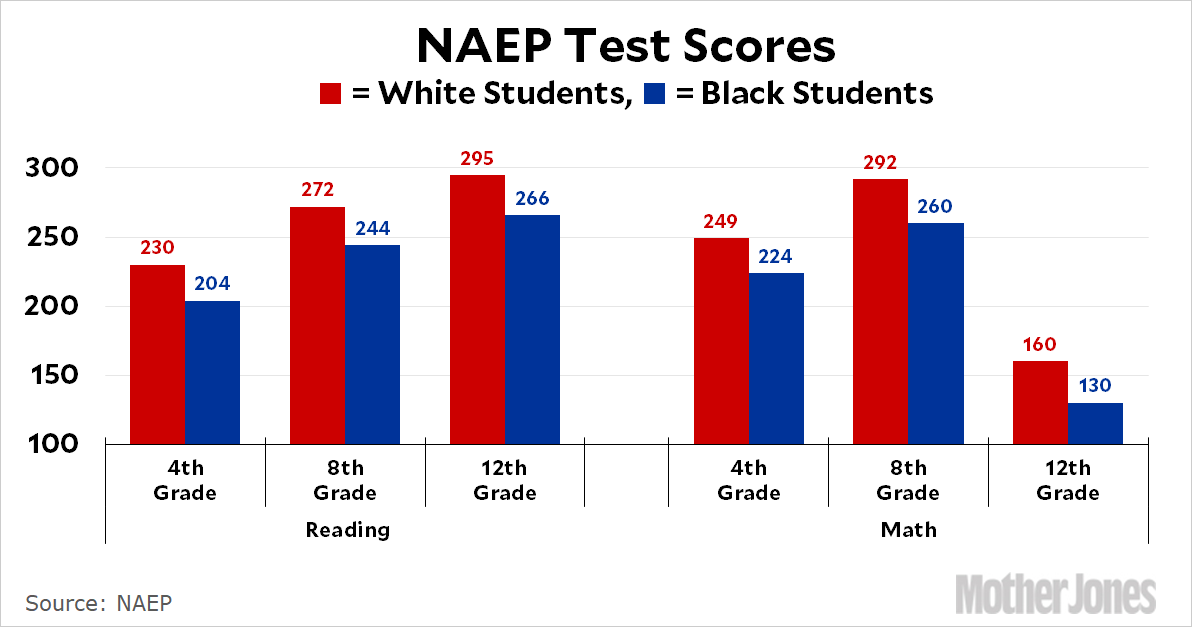This is Part 2 of America’s biggest disgraces. It shows the NAEP reading and math scores for students from 4th grade to 12th grade. In every grade, all the way up to high school graduation, Black students lag far behind their white counterparts:

The folks who run the NAEP are infamously shy about explaining their test scores in a way that makes sense to people. They are just numbers floating in air. However, it’s possible to apply some arithmetic to these scores and convert them into something a little more understandable.¹ In a nutshell, on average, Black students are roughly 2-3 years behind in 12th grade; 1-2 years behind in 8th grade, and about 1 year behind in 4th grade. Other research suggests that they’re already about half a year behind by first grade.
I’m not the world’s biggest fan of using “systemic racism” as something of a talisman that eliminates the need for further exploration, but if this isn’t a consequence of systemic racism then I don’t know what is. You’ll see these test results in blue states and red states; in poor areas and middle-class-areas; and in urban and rural areas. It’s far too widespread to be simply the product of individual bigotry here and there. It’s as systemic as systemic can be.
And it’s inexcusable. It’s not the case that if Black students graduated with the same scores as white students this would eliminate all racism. However, it is the case that we will never make serious progress toward eliminating racism until Black students are educated on a par with white students. No matter how broadminded they are, employers simply won’t hire kids with a 10th grade reading level when they could hire kids with a 12th grade reading level instead.
We’ve spent a lot of time and money on this problem over the past 50 years with little to show for it. At this point, nearly everyone is tired of trying. But both states and the federal government have shown an occasional appetite in the past for funding large numbers of experiments and tracking them closely, and that’s what’s needed here. It’s not especially sexy, so think of it as a sort of Manhattan Project aimed at the Black-white gap: hundreds of experiments funded with tens of billions of dollars and lasting a decade or more. Will that come up with answers? Nobody can say for sure, but it would be shame upon shame to give up before we’ve done this.
¹For the math nerds out there, standard deviations are reported for all these tests and it turns out that Black students score consistently about 0.8 standard deviations below white students. With a little bit of handwaving, this ends up equating to about a 13 percent lag, which is roughly 2.5 years for an 18-year-old; nearly 2 years for a 14-year-old; and 1 year for a ten-year-old. In any case, please take these as rough approximations, though they match up fairly well with other research findings.

















